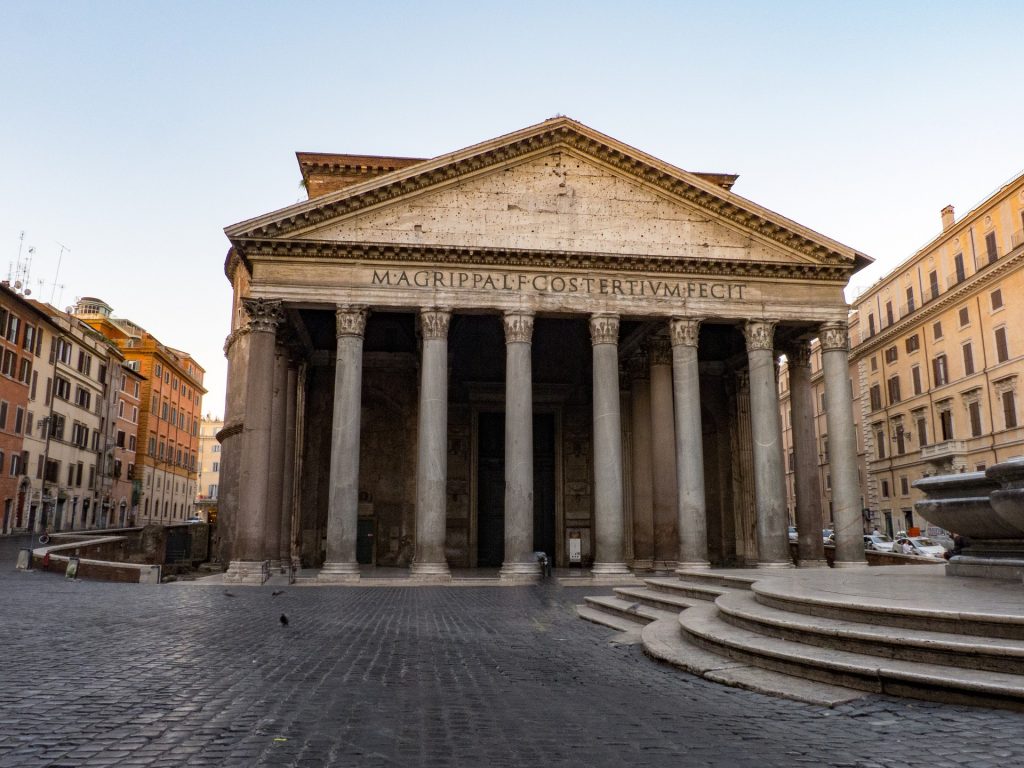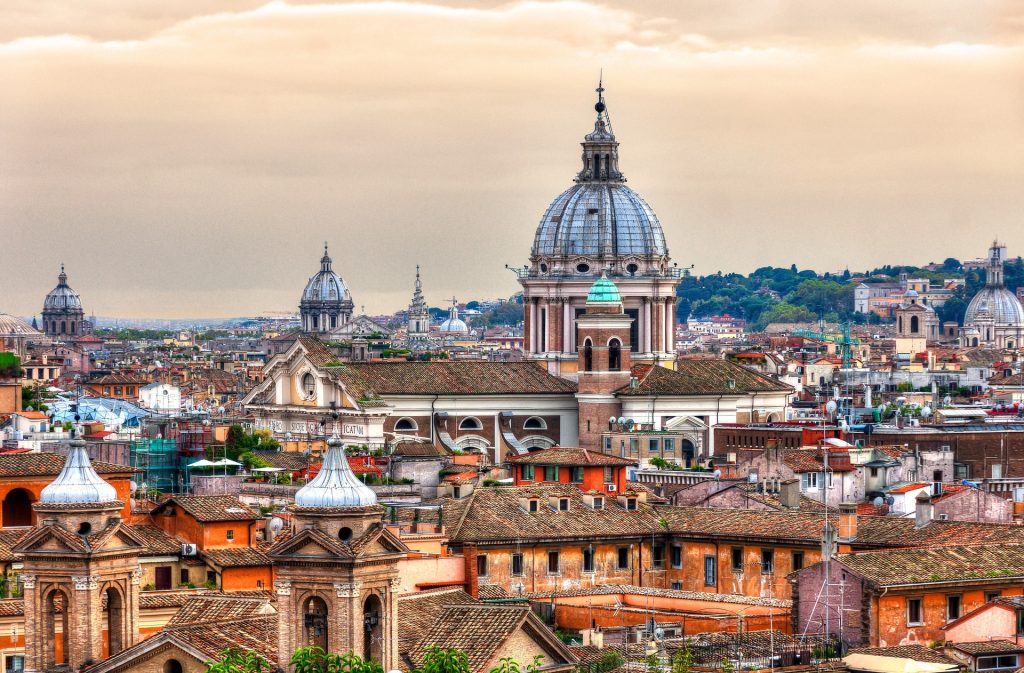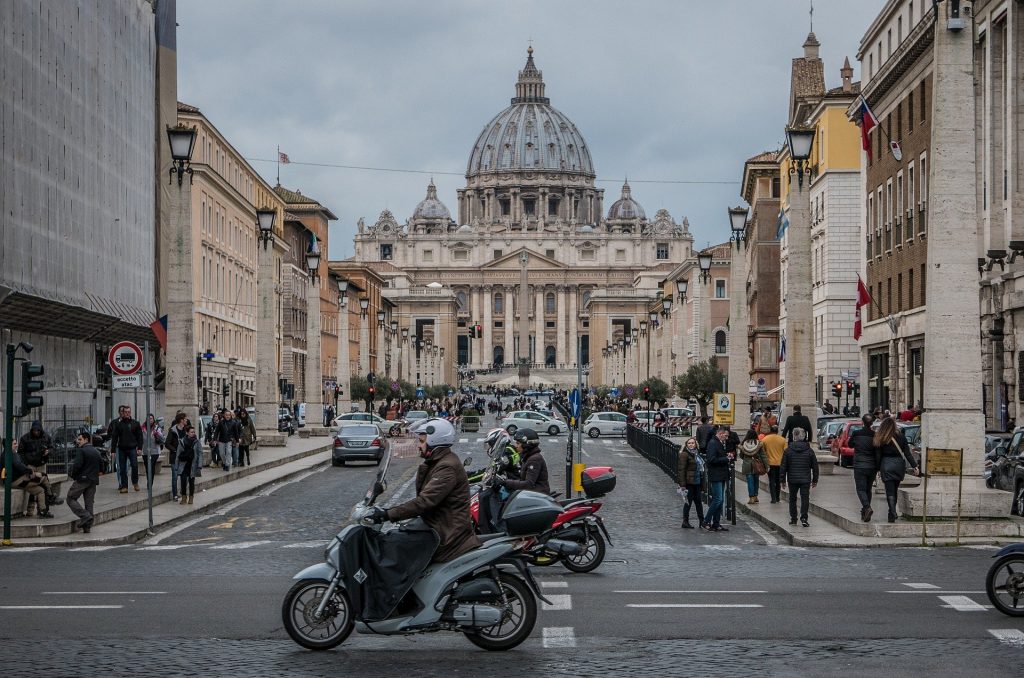Descubra 10 curiosidades sobre Roma, a Cidade Eterna

Roma é a capital e maior cidade italiana, e ao longo do tempo se tornou um lugar onde você pode encontrar algumas das coisas mais interessantes sobre a história da humanidade. Roma é uma cidade com muitos segredos e curiosidades que muita gente não conhece, a cidade é conhecida como um marco na história da arte, cultura e arquitetura, e foi uma cidade que viu impérios subirem e descerem, sendo um importante centro cultural por séculos.
A cidade foi originalmente chamada de Roma, mas devido à palavra grega ῥώμη (rhōmē), que significa “força”. Tornando se uma metonímia para o império, e eventualmente toda a nação da Itália, já que a sede do poder romano se movia pela península italiana. Do antigo Império Romano à moderna Roma de hoje, há muitos fatos interessantes sobre Roma que você talvez não conheça.
1. História
Roma é uma das cidades historicamente mais significativas do mundo, e foi construída em um rio pantanoso, a história de Roma foi construída camada sobre camada, com sua influência se estendendo muito além das fronteiras da Itália. E atualmente, é uma das cidades continuamente habitadas mais antigas da Europa e do mundo, fazendo com que sua história seja repleta de fatos interessantes.
A construção oficial de Roma começou em 21 de abril de 753 aC, quando o primeiro imperador, Rômulo, se separou com seu irmão gêmeo Remo, fazendo desse dia o lendário dia da fundação de Roma, ou “AU” (ab urbe condita). Mas alguns registros dizem que tudo começou quando pequenas tribos atravessaram o rio Tibre, e começaram a habitar as colinas em suas margens, cerca de 800 anos antes de Cristo.
2. Expansão de Roma

No mundo antigo, Roma era uma cidade cercada por uma muralha, mas a cidade teve que ser expandida por causa do aumento da população. Roma foi uma grande civilização que prosperou no comércio com outras culturas e sociedades, e com sua expansão, o governo e a sociedade tornaram-se mais centralizados.
A expansão do império durou desde o século II a.C, com a conquista da Itália, até o século V d.C, onde o domínio romano finalmente entrou em colapso. Nesse período, Roma conseguiu conquistar mais de dois terços do que hoje é a Europa moderna e o norte da África, e atualmente a cidade se transformou em um dos destinos mais populares do mundo quando o assunto é turismo.
3. Cultura
Roma é uma das cidades mais significativas histórica e culturalmente do mundo, pois existem tantos fatos interessantes sobre esta cidade que as histórias sempre nos surpreendem. A cultura de Roma se desenvolveu ao longo do tempo como resultado das ondas de migração, invasão e comércio nas costas italianas.
Sua cultura é tão rica e diversificada quanto a própria cidade, já que os romanos tinham um forte senso de orgulho e eram conhecidos por seu estilo de vida luxuoso, atividades artísticas e amor ao entretenimento. Isso fez com que a cidade tivesse uma rica herança cultural, que inclui algumas das estruturas arquitetônicas antigas mais famosas do mundo. A impressionante face moderna da capital foi criada por Benito Mussolini no século 20 usando tijolos vermelhos escuros e blocos de mármore gigantes.
4. Patrimônio Mundial

Com sua nova inclusão na Lista de Patrimônio Mundial da UNESCO, a aplicação da designação de Património Mundial visa afirmar o valor do património cultural de Roma em termos de conteúdo, preservação e identificação, uma vez que a cidade possui um total de 981 sítios tombados como patrimônio.
A cidade também conta com mais de 2.870 edifícios antigos protegidos pelos Patrimônios Mundiais da UNESCO. A Itália tem mais patrimônios mundiais da UNESCO do que qualquer outro país: 54 com Veneza, Roma e Florença, bem como muitas outras atrações históricas na lista.
5. Atrações
Roma é o lar de algumas das histórias mais fascinantes do planeta, e uma das consequências disso é a cidade abrigar algumas das atrações mais famosas do mundo, como o Panteão, a Fontana di Trevi, e o Fórum Romano. No entanto, um dos marcos mais famosos de Roma e do mundo é o Coliseu, que foi encomendado pelo imperador Vespasiano por volta de 70 d.C e concluído apenas em 80 d.C.
No entanto, a popularidade de Roma como destino turístico não aconteceu da noite para o dia, a cidade obteve maior destaque em 1871, quando Roma se tornou um local de peregrinação internacional, que as pessoas acorreram a esta antiga metrópole de todo o mundo para visitar lugares sagrados, como a Basílica de São Pedro e os Museus do Vaticano.
6. Culinária Local
A culinária de Roma é uma mistura de antigas tradições romanas, culinária italiana, tradições germânicas e costumes judaicos. Essa variedade de sabores se dá muito por conta do histórico da cidade, uma vez que a mesma está entre uma das mais antigas e tradicionais do mundo. A cozinha romana foi muito influenciada por seus vizinhos e civilizações distantes, e um dos pratos mais característicos de Roma é o baccala’ mantecato, que é bacalhau seco que foi esmagado com alho, azeite e molho de tomate.
Roma sempre foi influenciada pelos produtos locais, que variam devido ao vasto território que Roma cobre, outro prato italiano bastante conhecido pela região é o espaguete, que foi inventado pelo chef de Catarina de Médici após sua chegada a Marselha vinda da Itália, na época de seu casamento com o rei Henrique II da França.
7. Arquitetura

Roma é um exemplo real do início da Era Imperial e sua arquitetura reflete isso muito bem. A cidade apresenta uma mistura de arquitetura clássica, arquitetura moderna e arquitetura pós-moderna, oque a tornou uma das cidades mais emblemáticas da Europa e do mundo. Um dos aspectos que mais tornam a cidade fascinante é que os responsáveis pelas construções ao longo de sua história, usaram diferentes tipos de pedras para criar diferentes texturas.
Há muitos fatos interessantes que você deve saber sobre a arquitetura de Roma, pois suas construções da cidade vão desde ruínas antigas, até prédios modernos e grandes palácios ao lado de blocos de apartamentos comuns. Você pode ter pensado que Roma sempre foi uma cidade bonita, mas nem sempre foi assim, e sua construção de arquitetura não se limita apenas à cidade.
8. Localização
Roma está precisamente localizada as margens oeste do Rio Tibre, a aproximadamente 25 quilômetros do centro da Itália. A cidade sempre foi um local importante por causa de sua posição central na Itália, o que a levou a ser invadida por impérios como os gregos, espanhóis e franceses ao longo da história.
A cidade serviu como centro da civilização ocidental por mais de dois mil anos muito por conta de sua localização, e se totnou das cidades mais emblemáticas do mundo. A localização de Roma está no eixo EW no norte da Itália, e nenhuma outra cidade na Itália pode competir com ela no que diz respeito ao significado econômico, político e cultural.
9. Religiosidade

A religiosidade de Roma é um tema interessante para explorar, e a primeira coisa que devemos saber é que esta cidade já foi povoada por uma grande variedade de religiões. Os próprios romanos eram politeístas, mas também levavam escravos do território conquistado que praticavam diferentes religiões, no entanto, não é segredo para ninguém que a religião predominante do continente europeu é o cristianismo, fazendo com que a cidade seja repleta de igrejas e esculturas religiosas e angelicais por todos os cantos.
As igrejas são uma das principais atrações para os turistas que visitam Roma, e a Cidade do Vaticano está situada dentro de Roma, com suas fronteiras reconhecidas internacionalmente por tratado. Sem dúvidas vale a pena visitar o Vaticano, que abriga a Basílica de São Pedro e os afrescos de tirar o fôlego de Michelangelo. A maioria das pessoas não está ciente disso, mas não é incomum que os católicos romanos rezem a São Pedro, que eles acreditam estar enterrado sob a vizinha Basílica di San Pietro. A cidade em si era e é tão rica religiosamente que se tornou o principal ponto de interesse de muitos historiadores.
10. A Cidade Eterna
Além de ter presenciado eras muito anteriores a Jesus, Roma sobreviveu a diversos impérios e períodos diferentes, incluindo o Império Romano, o Sacro Império Romano, o Império Romano do Ocidente, o Império Bizantino, o Reino Latino de Jerusalém e o Império Otomano. Isso fez com que a cidade recebesse o apelido de “Cidade Eterna”.
A Cidade Eterna é uma das cidades mais emblemáticas da Europa, e sua longa história deu origem à uma cultura riquíssima, além da arte e arquitetura que ainda existe hoje. Roma é considerada um símbolo da civilização ocidental, e esteve no centro da cultura, educação e política europeias durante séculos, sendo o lar das obras de muitas pessoas que influenciaram a arte e arquitetura mundial, como Michelangelo e Bernini.